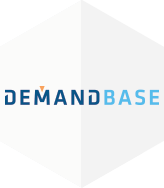
Account-based marketing (ABM) is gaining serious traction as more than 90% of B2B organizations consider it a “must-have” tactic, according to SiriusDecisions’ 2015 State of Account-Based Marketing (ABM) Study. Wider adoption is anticipated; nearly two-thirds (60%)of marketers expect to invest in ABM technology in the next 12 months, the study revealed.
of B2B organizations call account-based marketing a “must-have” tactic
While ABM requires a shift in mindset and dedicated resources, the potential payoff is significant. According to research from ITSMA, a marketing trade association, more than 80% of companies say that ABM delivers greater ROI than other marketing initiatives.
“Account-based marketing has moved from being a shiny new object to a tactic that nearly every B2B marketer is looking to implement, because the benefits are being proven,” said John Dering, Director of Marketing Programs for Demandbase. “For the past several years, ABM has been this really hot, trendy thing. Now that the leaders have shown some impressive results in terms of driving growth, it’s starting to be adopted by everyone who was waiting to see how the first wave shook out.”
Early adopters of ABM technologies have seen clear benefits:
- RGIS, a provider of inventory management and supply chain technologies, has achieved a 21% lead conversion rate and a four-fold increase in its web lead generation efforts by adopting an ABM strategy to drive international business in its targeted verticals of retail, healthcare and manufacturing.
- Information and services solutions provider CSC saw a 37% increase in website views from targeted accounts with company-targeted advertising. “Account-based marketing allows us to envelop the accounts we care about most with the right message at the right time,” said Nick Panayi, Head of Digital Marketing for CSC.
- Dell has leveraged display advertising for ABM, resulting in a 63% lift in site engagement with targeted advertising and a 71% boost in site engagement with personalized banner ads.
Account-based marketing may be a new buzzword in B2B, but smart marketers have been supporting their named account sales counterparts for years, according to Matt Heinz, President of Heinz Marketing. “In one way, I see ABM as a response to inbound marketing. Inbound is great, but you don’t have control over quantity and quality. You also can’t afford to wait until those named account targets happen to find your content and download something.”
Tracking Opportunities And Relationships
Since ABM requires a significant investment in resources, it is critical to track the progress of target accounts. Experts explained that there are two groups of metrics to track ABM success:
Opportunity-based metrics: These include new revenue, pipeline growth, marketing-sourced new opportunities and opportunities already in the pipeline. “They’re still the same type of metrics that you look for in measuring a traditional campaign,” Dering said. “For an email, whether it’s to your targeted account or a broader campaign, you look at open and click rate, deliverability rates, and things like that to measure how your automation and your approaches are working.” He noted that ABM involves measuring how campaigns are influencing an account as a whole, not just individual engagement.
Relationship-based metrics: Measurements such as churn rate and advocacy rates provide insight into the customer experience. “The key question is: Are you creating a positive environment for your target accounts?” said Megan Heuer, VP and Group Director at SiriusDecisions. “The true test of ABM success is two-fold: are target accounts willing to stay with us and are they willing to buy more from us.”
When executed correctly, ABM enables a company to change the perception of the value they can bring to the target account."
According to ITSMA, other relationship-driven metrics are portfolio penetration, including cross-sell and upsell, and the number of new executive relationships within the account.
However, marketers shouldn’t focus solely on metrics when evaluating an ABM campaign, experts noted. “While metrics are important, companies need to recognize that ABM is not going to succeed if they treat it just like another marketing tactic,” said M. Jeffrey Sands, VP and Account-Based Marketing Practice Co-Lead for ITSMA. “When executed correctly, ABM enables a company to change the perception of the value they can bring to the target account.”
Sands pointed to one vendor that was perceived as a small hardware vendor, but wanted to position itself as a network partner. With an ABM program, the company increased year-over-year revenue by 30% and its marketing team contributed 30% of pipeline.
Developing New Skills
The SiriusDecisions report noted that almost half (47%) of respondents said they do not have the skills to implement ABM, which clearly highlights that B2B marketers will be looking to develop their ABM knowledge to be successful over the next year.
"It is extremely helpful if an ABM practitioner has some experience in sales."
“It is extremely helpful if an ABM practitioner has some experience in sales,” Heuer said. “If they bring to the role an understanding of how hard it is to be a salesperson, it gives them credibility.”
ABM marketers also have to be comfortable in a data-driven environment, Heuer noted. “They have to understand how to take account information — behavioral, profile, contact and predictive data — and turn it into insights that are relevant to different people in the organization.”
Being able to identify the right number of named accounts to scale properly is another hurdle for some B2B marketers. “The challenge that companies have right now is how do they scale their ABM program in a way that they can address internal requests from the sales team, but at the same time not lose the unique approach of ABM and revert back to the traditional kinds of marketing,” said Sands. “Salespeople are highly competitive, and when they start to see their peers succeed in implementing a strategy like ABM, they want to jump on that bandwagon really fast. You have to make sure you scale appropriately.”

There are a number of new stakeholders in target accounts, so companies need to tailor their messaging to business buyers rather than just technology buyers. “The conversations are different and you have to understand their businesses to have that kind of conversation,” said Bev Burgess, SVP, ITSMA Europe.
Account-based marketing requires tight coordination with sales to be effective, Heinz noted. “It’s not enough to do marketing-driven campaigns in isolation, especially with so much at stake when you’re targeting a small number of prospects to begin with. Your target clients are crazy busy, so each touch point must be tightly aligned and coordinated to have the maximum effect.”
Once an ABM lead is handed off to sales, it has to be given priority, according to Dan McDade, President and CEO of PointClear, a B2B prospect development company. “There is no value in developing business intelligence to market to a target account if sales is going to treat it just like any other lead.”
Case Study

Iron Mountain Boosts Target Account Engagement and Conversions
Iron Mountain, a provider of storage and information management services, aims to help organizations lower storage costs, comply with regulations, recover from disaster and use data to maintain a competitive advantage.
As a B2B company, Iron Mountain had three goals for its digital marketing:

Reach target accounts effectively with display advertising and push them to its website;

Identify target accounts on its website and engage them with relevant content; and

Increase conversion rates.
The Solution
To determine its targeting and personalization strategy, Iron Mountain implemented the Demandbase platform with partner solutions from Optimizely, Google and Oracle Eloqua, in a phased approach. The Demandbase solution included:
- Display advertising to drive target accounts to its website. To reach targeted accounts not visiting its website, Iron Mountain added Demandbase Company-Targeted Advertising. “This allowed us to put specific messages in front of just the companies we’re interested in,” explained Tom Berger, Director of Internet Marketing for Iron Mountain. “Then we can bring them to our website and engage them.”
- Targeted content for increased engagement. Iron Mountain implemented A/B testing with Demandbase and Optimizely to measure engagement with targeted content for companies in specific verticals that also met its size and location criteria.
- Shorter web forms for increased conversion. With Demandbase Forms, Iron Mountain captured much more data even though it reduced the number of form fields from 16 to 12. “All of the available data on a company is collected and passed back using Demandbase Forms into Eloqua and ultimately to Salesforce,” Berger noted.
This integration provided visibility into how different industries and companies of varying sizes interacted with its content. It also identified which target accounts were visiting the Iron Mountain website and how the conversion rates of small to medium-size businesses differed from those of enterprise companies. “Looking at Demandbase Analytics, we can make better content decisions to support content marketing efforts,” Berger said. - Better insight. Iron Mountain also worked with the Demandbase Premium Analytics team to extract the right data from its content management system and put it into Google Analytics. With dashboards developed by Demandbase Premium Analytics, Iron Mountain can provide metrics to the inbound team so it can see what content is attracting people to the website, how it’s engaging visitors and which content most influences conversions. “It’s nice to work with a team that understands Google Analytics very well and has the insight and background on all the value that Demandbase provides with their integration,” said Berger. “That’s really where the power is.”
The Results
The company has experienced increased engagement, conversions and display advertising lift with an ABM approach.
“Our first test with Demandbase, which targeted healthcare, showed a 120% lift in engagement,” Berger said. “If you display the right message to the right person at the right time, good things happen.” In addition, finance and banking showed an engagement lift of 115%. Other results included:
- A 219% increase in conversions while capturing more and richer data; and
- A 78% lift in page views and a 36% lift in company engagement with company-targeted advertising.
“Over the past year with account-based marketing, our web lead volume has more than doubled,” concluded Berger. “Everyone in sales and marketing wanted to know how we can do more.”
Broadening The Reach Of ABM
Going forward, experts note that ABM will expand its role in the marketing department to include a wider range of marketing activities.





“In the future, ABM will involve more of the marketing department, and you’ll see ABM marketers work with content marketers, event marketers and other aspects of marketing,” Heuer said. “These are all intertwined with your target accounts; so if you have an event, for example, you want to ensure it is appealing to those accounts.”
Experts said ABM needs to become a company-wide objective rather than a marketing-driven initiative to reach its full potential. “The companies that have had success have really positioned ABM as a strategic business initiative rather than a marketing program,” Burgess said. “Salespeople, finance, IT as well as marketing people need to agree that this is an important investment to make for the outcome to be most beneficial.”
While there are sophisticated tools emerging in the ABM space, future growth will depend on a combination of tools and tactics, experts noted. “Like most marketing efforts, the technology simply enables the right strategy, not the other way around,” said Heinz.
About Demandbase
Demandbase, the leader in account-based marketing, enables B2B companies to identify and target the accounts they value most, and then market to them across the entire funnel. The Demandbase B2B Marketing Cloud is the only subscription-based ad targeting and web personalization solution that lets marketers connect campaigns directly to revenue. The B2B Marketing Cloud is powered by patented technology, which allows companies to identify the accounts they value most and personalize their digital marketing efforts to them. With Demandbase, businesses can target, engage, convert and retain the customers that matter most to their bottom line. Enterprise leaders and high-growth companies such as Adobe, Salesforce.com, Box, CSC, DocuSign, Dell and others use Demandbase to drive account-based marketing and maximize their marketing performance. More information can be found at http://www.demandbase.com.
Questions? Send us an email at info@demandgenreport.com. Copyright © 2015 Demand Gen Report. All Rights Reserved.



